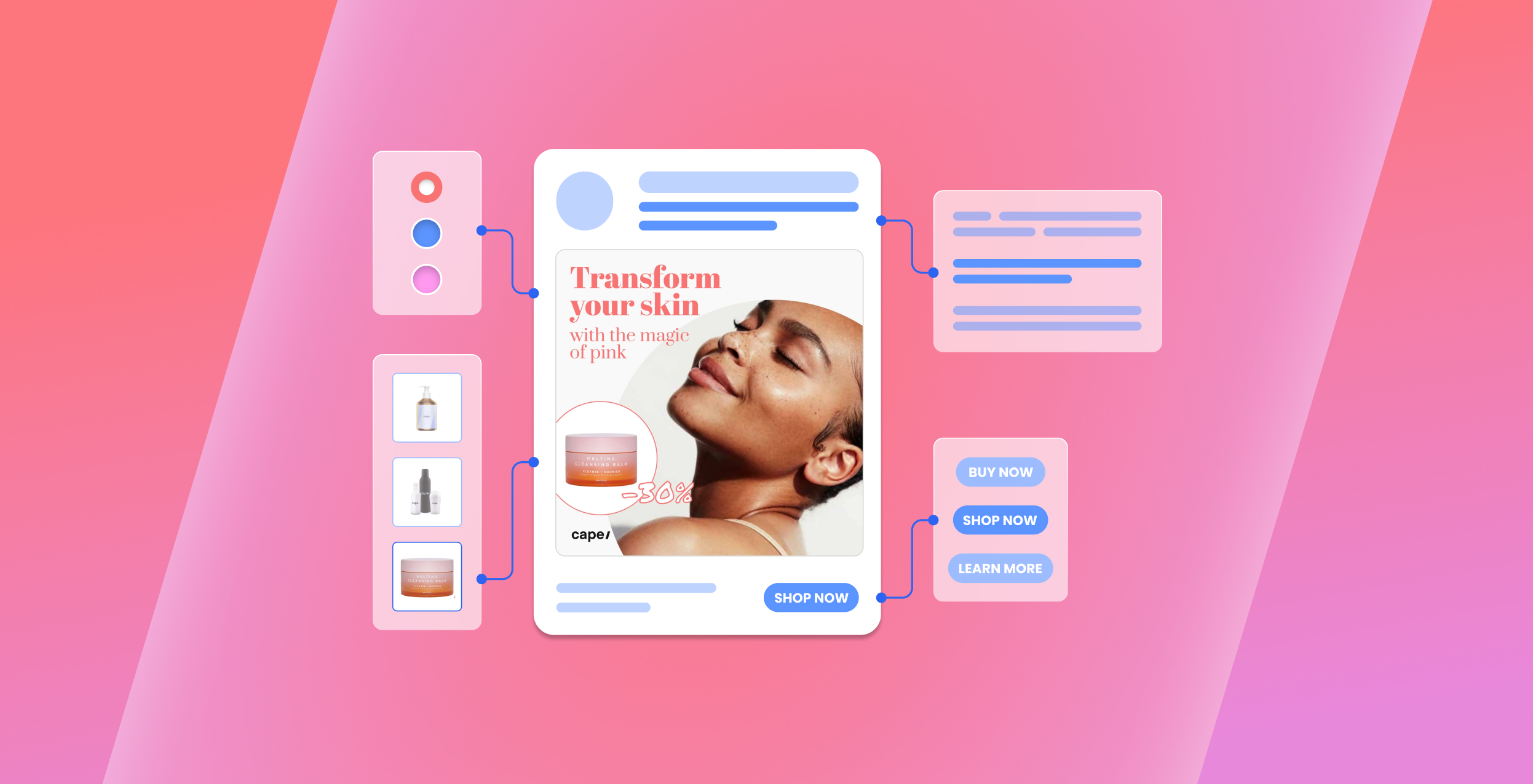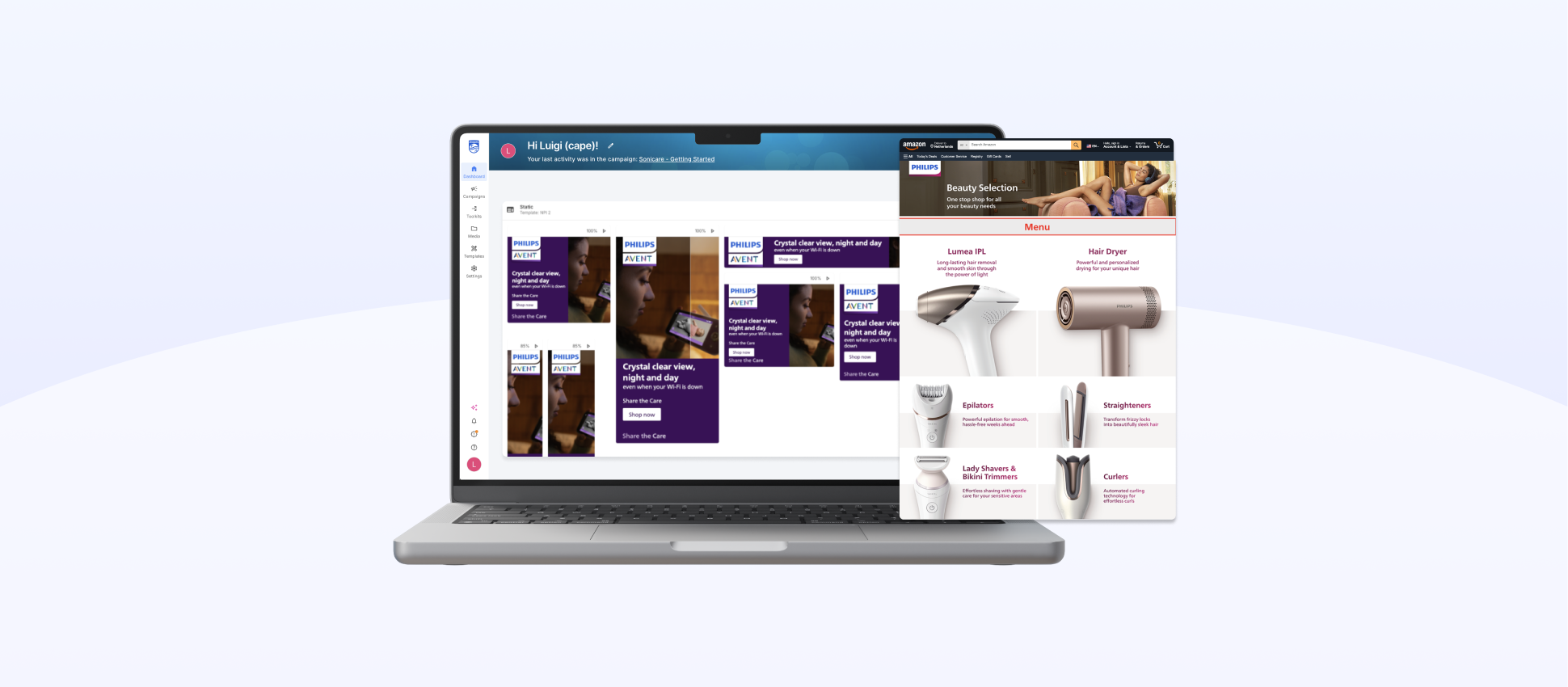

In today's hyper-competitive digital landscape, effective marketing strategies have become a cornerstone of success for businesses of all sizes. One approach that has proven to be incredibly effective is Dynamic Product Ads (DPAs). By using the power of data-driven personalisation, DPAs offer businesses a unique opportunity to engage with their target audience in a more personalised and relevant manner. In this blog, we'll explore what Dynamic Product Ads are, how they work, and the remarkable benefits and challenges they bring to the table.
What are Dynamic Product Ads?
Dynamic Product Ads (DPA) are ads that tailor its content specifically to each user based on their browsing behaviour, interests, and previous interactions with the business. They allow growth marketing and creative teams to transform simple product image ads into effective, high-quality, on-brand creatives at scale for every stage of the funnel. DPAs are commonly used by e-commerce businesses to retarget and re-engage potential customers who have shown interest in their products or have visited their website before.
The Underlying Magic of Dynamic Product Ads
Dynamic Product Ads are powered by a combination of data feeds, product catalogues, and automated algorithms. The feed or catalogue contains the information about all the available products, including product titles, images, prices, and descriptions. An automated algorithm analyses the user's browsing data and uses the information in the product feed to select the most relevant products for the user. The ad is then created and tailored to the customer at the time of serving. Dynamic product ads can be displayed in different formats, like display ads, social media ads, or search engine ads, and can be customised to perfectly fit the branding and design of the business.
The Challenge of Dynamic Product Ads
Retargeting through Dynamic Product Ads is very effective, but it often only reaches a low percentage of the total inventory due to cookie usage. The use of Cookies for third-party data is central to the traditional method of retargeting advertising. With the decline in cookie usage, the reach of retargeted DPAs significantly diminishes as well, reaching only a small fraction of the audience. However, cookies don't have to be essential for implementing a successful retargeting strategy. Advertisers can still achieve significant results by leveraging first-party data and contextual targeting. Cape offers an innovative take on DPA, achieving similar results without relying on cookies. Want to read more about our take on targeting without Cookies? Read here.
💡 Client Highlights - an Innovative Take on DPA
First party data allows quick and seamless ad personalisation for the product, destination or offer they want to promote. By utilising a feed-based setup with localised feed-data, KLM achieves even faster automated concept creation and publication. Local markets only need to review assets for final approval before publication as disclaimers, pricing, destinations, and visuals are automatically integrated, based on the first party data. KLM can also automate tailored campaigns using data feeds, such as live demand data, discounts, and competitive pricing. This automation extends to global campaigns with numerous contextual interpretations, all without cookies
Contextual data enables JET’s hyperlocal campaigning for city-based and even postal code-based ads. Think of city openings, recruitment, and brand awareness campaigns with localised assets and targeting. Just Eat Takeaway now incorporates real-time contextual data into their ads, such as the weather and time-of-day, to hit the mark every time. They can automatically create and adapt truly audience-based and hyper relevant ads by using this contextual data, without the use of cookies. They use a feed-based setup with the real-time contextual data that enables even faster automated concept creation. This way, their disclaimers, pricing, visuals, and audio are all automatically in the right place. And, their ads can automatically change, push, and pause based on this data.
Through retail media, Proximus gets to use retailer’s first-party data and the customer gets to see relevant ads. This solution enables them to achieve significant results by leveraging the first-party data, without cookie usage. With Cape's innovative approach to DPAs, Proximus managed to run more than 20 advertising campaigns, each with hundreds of audience specific ads. On Black Friday alone, they created and showed over 5000 ads to the right audience.
KLM, Just Eat Takeaway.com and Proximus can now manage all campaign types, budgets, and creatives in one place, including budgeting, creatives, validation checks, and precise audience targeting for any chosen platform, complete with the necessary campaign setup and naming conventions.
Latest News

Products and features
4 min read
11 March 2025
How Cape Solves Amazon Storefront Creation Challenges
As businesses grow, managing an increasing number of marketing concepts can become a logistical nightmare. From banners to videos and brand pages, finding and organising these assets across multiple business units often leads to inefficiency and confusion. That's where Cape comes in.

Industry insights
3 min read
20 January 2025
The New Instagram Layout Update: How to Optimise Your Feed for Non-Square Posts
Recently, Instagram has rolled out yet another update. What makes this one different? For casual users, a layout change of your feed may be just another visual element of the app to get used to. For marketers, it affects just about every aspect of your content strategy.

Industry insights
3 min read
02 January 2025
Optimising Your Content Strategy With Trial Reels
With shorter attention spans and a constant flow of information, creating engaging content is one of the key challenges for brands to get noticed by greater audiences and even their own followers. This is why optimising content strategy is extremely important, and focusing on trying to enhance your content can significantly improve viewership. One of the latest tools to help with this is Trial Reels on Instagram.



